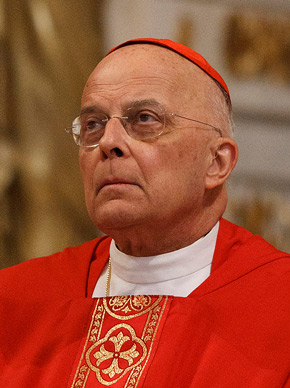
CHICAGO (CNS) — Cardinal Francis E. George of Chicago will undergo a chemotherapy regimen after tests revealed the presence of cancer in his right kidney.
The chemotherapy treatments will begin Sept. 5. Under the regimen, Cardinal George will have two weeks of treatments followed by one week with no treatment to allow for his immune system to recover. The treatment schedule will continue for the rest of the year.
Cardinal George met with doctors at Loyola University Medical Center in Chicago Aug. 27 after those physicians consulted with his doctors at the Mayo Clinic in Rochester, Minn. It was during this meeting, the Archdiocese of Chicago said in an Aug. 28 statement, that the chemotherapy treatment plan was settled upon.
Test results showed that a nodule on the cardinal's liver had contained cancerous cells. The nodule and surrounding tissue were removed Aug. 15. “There does not appear to be cancer in the liver now,” the archdiocese said.
But tests also revealed cancerous cells in Cardinal George's right kidney. Additional testing “did not conclude with certainty” that cancer exists elsewhere in his body, the archdiocese said, adding that it is impossible to detect cancerous cells in the bloodstream.
The archdiocese said the cardinal would continue with his regular work schedule, but that he would cut down on his public schedule on those weeks when he is not receiving treatment as his immune system will be weakened.
This is Cardinal George's second bout with cancer. In 2006, surgeons at Loyola removed his bladder, prostate gland and sections of his ureters — the tubes that carry urine from the kidneys to the bladder — to rid his body of cancer found there.
The cardinal, now 75, has often said that one of his goals was to live to see retirement since all of the other Chicago bishops died in office. His predecessor, Cardinal Joseph Bernardin, died in 1996 at age 68 of pancreatic cancer.
A five-month bout with polio when Cardinal George was 13 damaged both of his legs, forcing him to use a brace on his right leg. He walks with a pronounced limp.
He served as president of the U.S. Conference from Catholic Bishops from 2007 to 2010.
Appointed to head the Archdiocese of Chicago in 1997, he was made a cardinal in 1998. Before that, he had been archbishop of Portland, Ore., and bishop of Yakima, Wash.
A member of the Oblates of Mary Immaculate, Cardinal George was his order's vicar general in Rome, 1974-86. He would celebrate the 50th anniversary of his priestly ordination next year.





